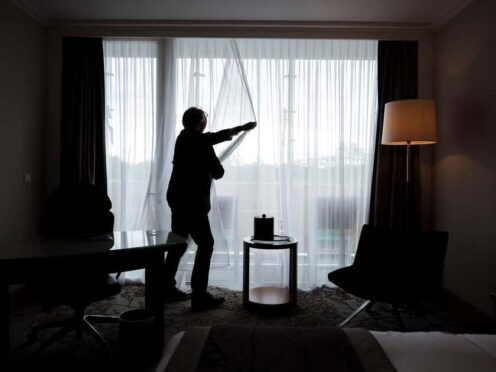
The number of households across the UK has grown by almost two million in a decade, with three in 10 made up of people living on their own.
According to the latest estimates from the Office for National Statistics (ONS), there were 28.4 million households in the UK in 2023 – a rise of 6% or 1.7 million since 2013.
More than half (56%) were a couple with or without children and 11% were a lone-parent family, figures published on Wednesday showed.
There were 8.4 million people living alone in the UK in 2023, the ONS said, equating to 30% of all households and 13% of all people living in households.
The ONS defines a household as one person living alone, a family, more than one family or no families in the case of a group of unrelated people.
The latest statistics also included estimates for the number of families – that is a married, civil partnered or cohabiting couple with or without children, and lone parents with at least one child living at the same address.
The number of families is estimated to have risen by 1.1 million families (6%) since 2013, to 19.5 million families in the UK in 2023.
Both the rise in households and families were consistent with a growth of 6% in the UK population in the decade to 2022, the ONS said.
But the number of people living alone has increased by more than this, the ONS said, up 8% from 7.8 million in 2013.
The number of men living alone last year grew by more than the number of women living alone compared with 2013, with 415,000 more men and 204,000 more women in this situation.
Half of all people living alone in the UK in 2023 were aged 65 years or older, and while this has risen from 47% a decade earlier, the proportion has been at least 50% since 2020, the ONS said.
Two-thirds (66%) of families were married or civil-partnered couples, while cohabiting couple families accounted for almost a fifth (18%).
In 2023, there were 19.5 million families in the UK, an increase of 1.1 million (6%) since 2013.
Family types in 2023:
• married or civil-partnered couple families (66%)• cohabiting-couple families (18%)• lone-parent families (16%)
Read more ➡️https://t.co/AcXokSqjk4 pic.twitter.com/DIVfxI8fsc
— Office for National Statistics (ONS) (@ONS) May 8, 2024
Single-parent families made up the remaining 16%, the statistics body added.
Of the 3.2 million lone-parent families in 2023, the majority (85%) were headed up by single mothers, while lone fathers accounted for 15% (477,000).
The latter were more likely to include adult children only (52%) than lone-mother families (34%), the ONS said.
There has been a slight rise when it comes to young people living with their parents.
Some 3.6 million young people aged 20 to 34 lived at home with a parent or parents last year, making up more than a quarter (28%) of all young people aged 20 to 34 in households across the UK.
This was an increase compared with 26% in 2013.
More young men were living at home with a parent or parents than young women, the figures suggested.
A third (33%) of men aged between 20 and 34 were in this situation in the UK in 2023, compared with less than a quarter (22%) of young women.

Enjoy the convenience of having The Sunday Post delivered as a digital ePaper straight to your smartphone, tablet or computer.
Subscribe for only £5.49 a month and enjoy all the benefits of the printed paper as a digital replica.
Subscribe